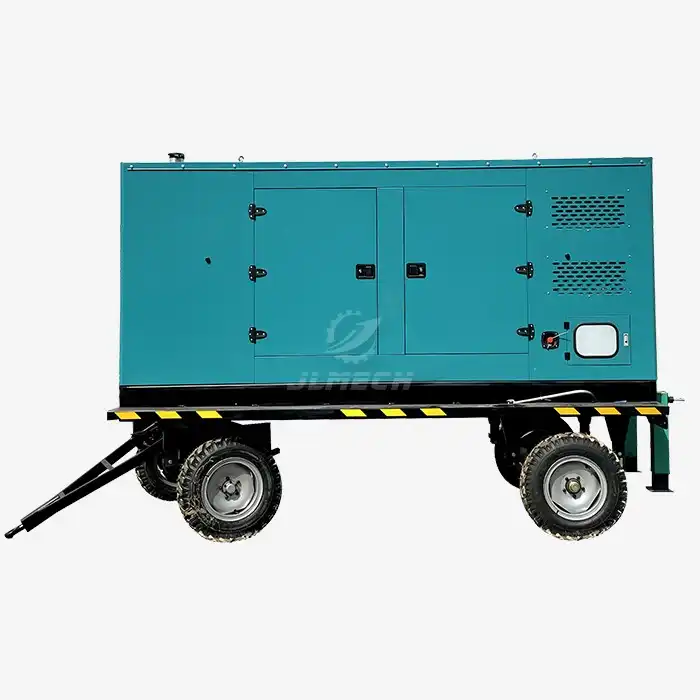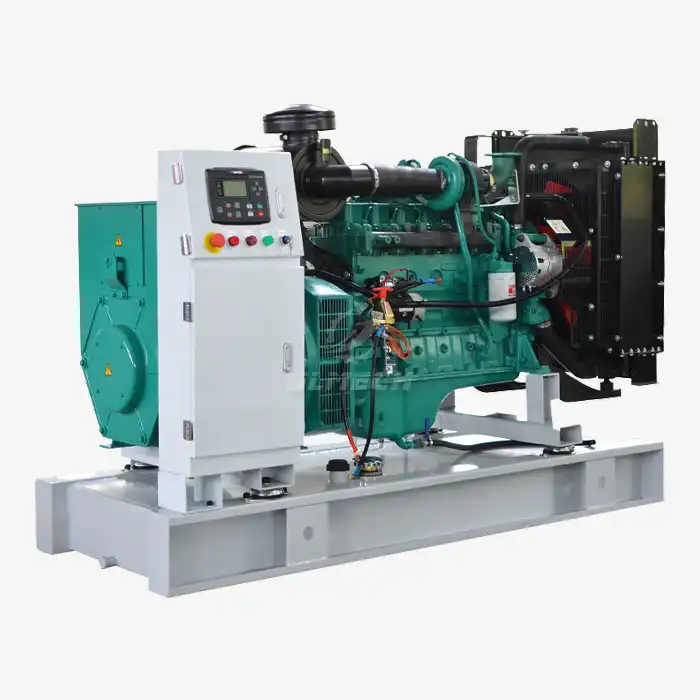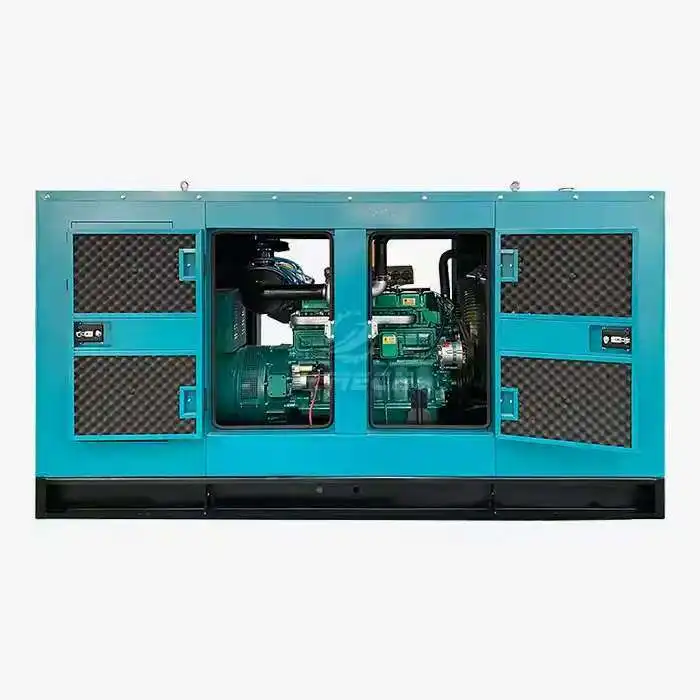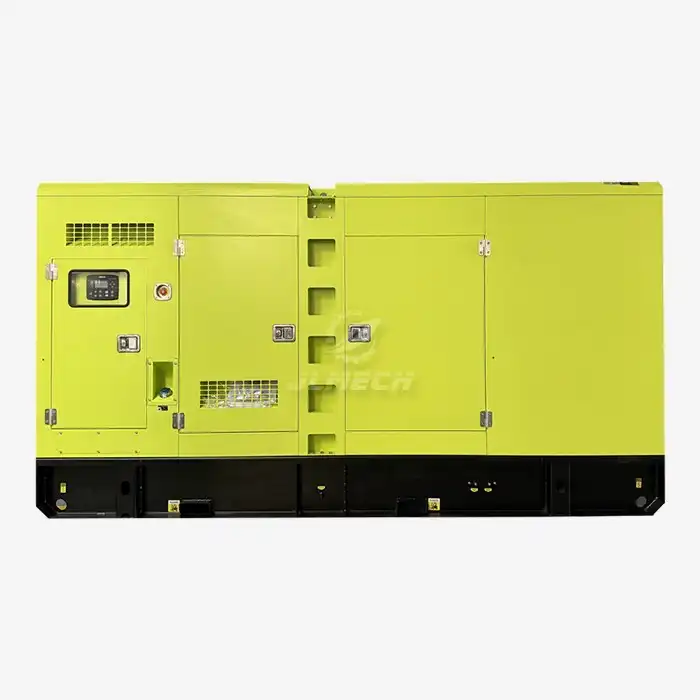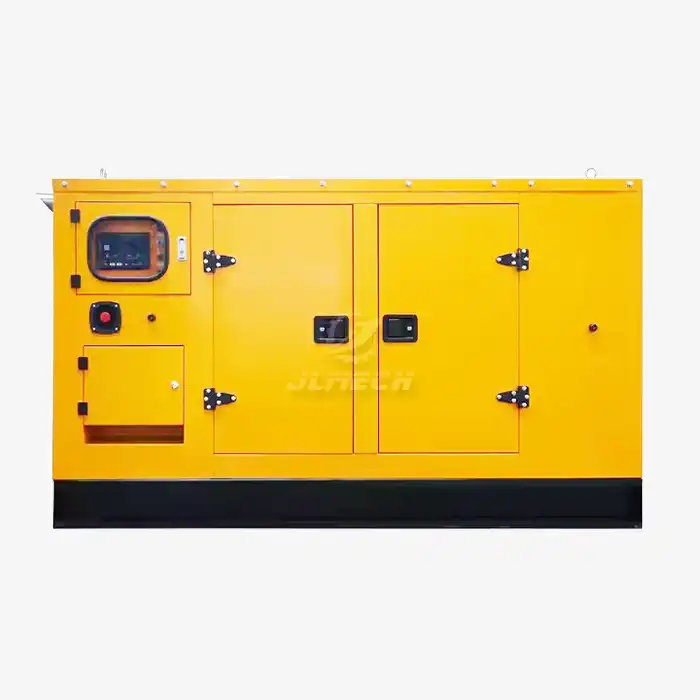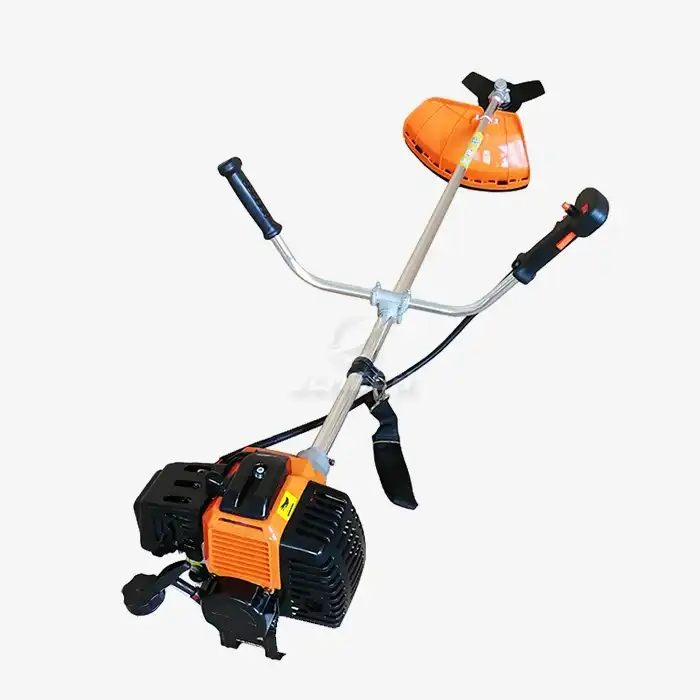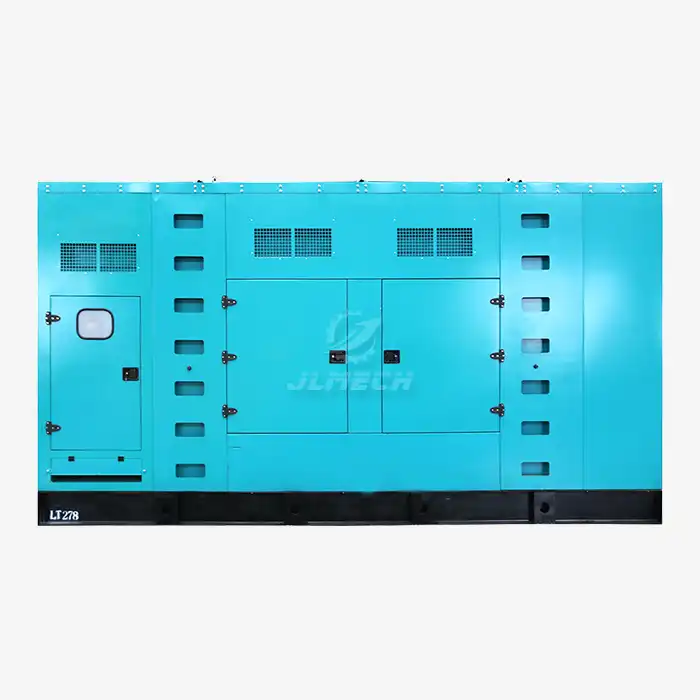What is a good kVA rating for a generator?
Choosing the right generator isn't just about power—it's about securing the continuous, reliable electricity that keeps your business running.
Selecting the correct kVA rating for a generator is one of the most critical decisions you'll make when ensuring operational continuity. A generator with an insufficient kVA rating will be overloaded, leading to potential failure, while an oversized unit wastes capital and increases running costs. The key is to find the perfect balance for your specific power needs, which often comes down to understanding the concept of continuous generator ratings. This article will guide you through the process of determining the ideal generator size for your application.
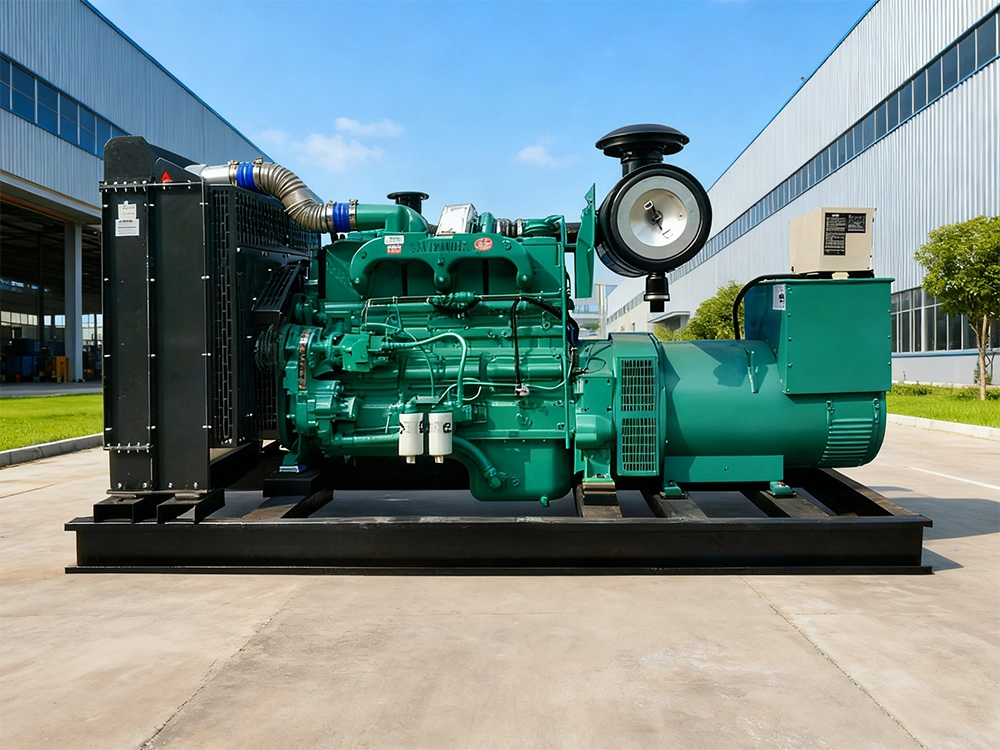
Understanding kVA and Why It Matters
kVA, or kilovolt-ampere, is the unit of apparent power in an electrical system. It represents the total power a generator can produce.
To understand why generators are rated in kVA instead of kW (kilowatt), it helps to know that apparent power (kVA) is a combination of the actual work power (kW) and the reactive power (kVAR) required by magnetic equipment like motors and transformers.
The relationship is defined by the power factor (PF), which is typically 0.8 for diesel generators: kW = kVA × PF. For instance, a 100 kVA generator at a 0.8 power factor can supply 80 kW of real power .
The physical size of an electrical machine is fundamentally tied to the product of its voltage and current (MVA for large units), which is why kVA is the standard rating. It directly indicates the generator's current-carrying capacity and its ability to handle your load's electrical demands.
Your Step-by-Step Guide to Sizing a Generator
A systematic approach ensures you account for all critical factors. Follow these steps to determine your ideal kVA rating.
Step 1: Create a Load Inventory. List every single device and system the generator will power. Include motors, compressors, lighting, heating, and sensitive electronic equipment. Don't forget the essential loads you need to keep running and the non-essential ones you might be able to shed during an outage.
Step 2: Categorize Your Loads. Separate your equipment into two categories:
Resistive Loads: These draw a steady, predictable current. Examples include incandescent lighting, water heaters, and electric ovens. Their kVA requirement is roughly equal to their kW rating.
Inductive Loads: These are typically motor-driven loads found in HVAC systems, air compressors, pumps, and machinery. They require a significant surge of power (up to 6 times their running current) to start. This starting kVA (skVA) is the most crucial factor in correct generator sizing.
Step 3: Calculate the Total kVA Requirement.
For resistive loads, the kVA is approximately equal to the kW.
For inductive loads, you must calculate the starting kVA. A common rule of thumb is that a motor requires 3-5 times its running kVA to start.
Add the running kVA of all resistive loads and the starting kVA of the largest inductive load to the running kVA of all other loads. This sum represents the peak kVA your generator must be able to deliver.
Step 4: Apply a Safety Margin. Once you have your calculated total kVA, add a safety margin of 10-20%. This provides a buffer for future load additions, ensures the generator isn't constantly running at 100% capacity, and accounts for any potential miscalculations. The final figure with this margin is the minimum kVA rating you should consider.
The Critical Role of Continuous Generator Ratings
When reviewing specifications, you'll encounter different kVA ratings for the same machine. The most important of these for most industrial and commercial applications is the continuous generator ratings.
This rating denotes the maximum load a generator can supply for an unlimited number of hours per year under standard conditions. It is the benchmark for sustained operation and is essential for applications where the generator is the primary source of power or for extended backup duty.
Understanding this rating is fundamental because it is designed to ensure the generator operates within its thermal limits, preventing damage from overheating over long periods. Selecting a generator whose continuous generator ratings match or exceed your calculated continuous load is paramount for long-term reliability.
Decoding Other Key Rating Types
Generators have multiple power ratings based on different duty cycles. Confusing them can lead to serious operational issues.
Prime Power Rating: This is the maximum power a generator can supply for an unlimited time at a variable load. It is typically used as a primary power source in situations where there is no utility grid. Prime power is often slightly higher than the continuous rating.
Standby Power Rating: This rating is for emergency use only, typically supplying power during a grid outage for a limited duration. It is often higher than the prime rating but cannot be used for extended periods as it does not include the same overload capability and is not designed for unlimited annual operation.
Short-Term Ratings: These are crucial for handling motor starts. You may see ratings for 5-minute or 5-second intervals. A generator might have a continuous rating of 90 kVA, a 5-minute rating of 112 kVA, and a 5-second rating of 150 kVA. These higher short-term outputs allow the generator to absorb the initial inrush current from large motors without stalling.
Common Sizing Mistakes and How to Avoid Them
Even with a good process, it's easy to fall into traps. Here are the most common errors we see.
Ignoring Motor Starting Currents: This is the number one cause of undersized generators. A 10 hp pump motor might only need 7 kW to run, but it could require 40-50 kVA to start. If your generator is only sized for the running load, it will fail every time that pump kicks on.
Oversizing 'Just to Be Safe': While an undersized generator is a clear problem, an oversized one also has drawbacks. A generator running consistently below 30-40% of its rated load will operate inefficiently, leading to wet-stacking (unburned fuel and soot accumulation in the exhaust), increased maintenance costs, and higher fuel consumption per unit of output.
Forgetting About Voltage Dip: When a large motor starts, the initial high current draw can cause a temporary drop in the generator's output voltage. Excessive voltage dip can cause other connected motors to stall and sensitive electronics to reset. Standards often stipulate that this transient voltage dip shall not exceed 20%. Proper sizing ensures voltage stability.
Real-World Application Examples
Let's look at how these principles apply in different sectors. The right continuous generator ratings are vital across industries.
Data Centers: These facilities require 100% uptime. The backup generators must be sized to carry the entire IT load, plus cooling (CRAC units), lighting, and support systems. The generators are typically sized for continuous duty and are often N+1 redundant.
Construction Sites: A site might need to power large inductive loads like concrete mixers, cranes, and welding equipment. The generator must be sized based on the largest motor's starting current plus the running current of all other equipment.
Healthcare: Hospitals require both emergency backup for life-saving equipment and often prime power for facilities in remote areas. Loads include a complex mix of sensitive electronics and large HVAC systems, making accurate load calculation and the selection of generators with appropriate continuous generator ratings a matter of life and death.
Manufacturing Plants: In a plant, the generator may need to start large conveyor belts, injection molding machines, or industrial pumps. A soft starter or variable frequency drive (VFD) can be used on the largest motors to significantly reduce the starting kVA requirement, potentially allowing for a smaller, more cost-effective generator.
Consulting the Experts
While this guide provides a solid foundation, consulting with a qualified power generation specialist is highly recommended. The calculations for complex installations with numerous large motors and non-linear loads can be intricate. Specialists use sophisticated software to model load sequences and motor starting profiles to ensure the selected generator will perform reliably.
They can also help you navigate relevant standards and regulations, such as those from IEEE, which govern the rating structures for electrical equipment and ensure compliance and safety .
Conclusion
Choosing a generator with the correct kVA rating is a technical process that demands careful analysis of your specific loads, with a sharp focus on the continuous generator ratings. By thoroughly inventorying your equipment, correctly calculating both running and starting demands, and understanding the different types of generator ratings, you can secure a power solution that delivers reliability, efficiency, and peace of mind for years to come.
Our expert team is ready to help you select the most suitable generator for your needs. Please send your inquiries to skala@whjlmech.com to learn about our customized products and services designed to meet your company's unique power requirements.
References
- Electrical Engineering Portal. (2022). 12 essential parameters required for rating large generators.
- Schneider Electric. (2022). Generator protection. Electrical Installation Guide.
- Aviation Stack Exchange. (2016). Maximum ratings of a generator depending on duty cycle.
- Aviation Stack Exchange. (2016). Generator ratings for different duty cycles.
- IEEE. (2021). *IEEE C37.04-2018/Cor 1-2021: Standard for Ratings and Requirements for AC High-Voltage Circuit Breakers*.
- WSSC Code of Regulations. (n.d.). Ch. 11.120 Art. VII Standby Generator.



